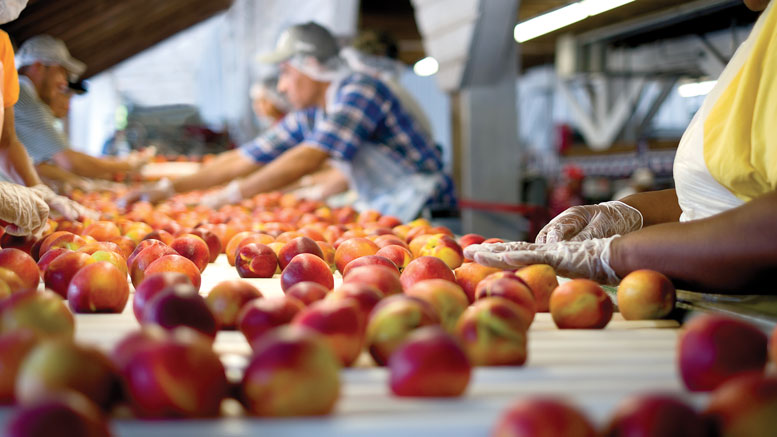Food waste is a significant global issue, impacting both the environment and the economy. One of the most effective strategies to combat this problem is the use of refrigerated warehousing. By maintaining optimal storage conditions, refrigerated warehousing plays a crucial role in preserving food quality and extending shelf life. This article explores how refrigerated warehousing reduces food waste and contributes to a more sustainable food supply chain.
- Extending Shelf Life
1.1 Temperature Control
- Optimal Storage Conditions: Refrigerated warehouses maintain precise temperature and humidity levels, which are essential for preserving the freshness and quality of perishable goods.
- Slowdown of Spoilage: By slowing down the natural spoilage processes, refrigerated warehousing extends the shelf life of fruits, vegetables, dairy products, meats, and other perishable items.
1.2 Preservation of Nutritional Value
- Retention of Nutrients: Proper temperature control helps retain the nutritional value of food, ensuring that it remains beneficial to consumers for a longer period.
- Flavor and Texture: Maintaining optimal storage conditions also preserves the flavor, texture, and overall quality of food, making it more appealing to consumers and reducing the likelihood of waste.
- Minimizing Post-Harvest Losses
2.1 Immediate Cooling
- Field to Warehouse: Refrigerated warehousing allows for the immediate cooling of harvested produce, reducing the risk of spoilage during transportation and storage.
- Controlled Atmosphere Storage: Technologies such as controlled atmosphere storage further enhance the preservation of produce by regulating oxygen, carbon dioxide, and nitrogen levels.
2.2 Reduced Microbial Growth
- Lower Temperature Inhibits Growth: Cold temperatures inhibit the growth of bacteria, molds, and yeasts that cause food spoilage, thus extending the usability of food products.
- Safe Storage Conditions: Maintaining safe storage conditions helps reduce the risk of foodborne illnesses, which can lead to large quantities of food being discarded.
- Efficient Inventory Management
3.1 Real-Time Monitoring
- IoT and Sensors: Advanced monitoring systems equipped with IoT sensors provide real-time data on temperature and humidity, ensuring optimal storage conditions at all times.
- Automated Alerts: Automated alerts notify warehouse managers of any deviations from set parameters, allowing for immediate corrective action to prevent spoilage.
3.2 Improved Stock Rotation
- First In, First Out (FIFO): Implementing FIFO inventory management practices ensures that older stock is used before newer stock, reducing the chances of food reaching its expiration date.
- Minimized Overstocking: Efficient inventory management reduces overstocking, which often leads to waste when excess products spoil before they can be sold or used.
- Reducing Transportation Waste
4.1 Strategic Location
- Proximity to Markets: Strategically located refrigerated warehouses close to production sites and markets reduce transportation times, minimizing the risk of spoilage during transit.
- Distribution Efficiency: Efficient distribution from refrigerated warehouses ensures that perishable goods reach retailers and consumers faster, maintaining their quality and reducing waste.
4.2 Cold Chain Integrity
- Seamless Cold Chain: Maintaining a seamless cold chain from production to consumption is essential for preserving the quality of perishable goods. Refrigerated warehousing is a critical link in this chain, ensuring that products remain at the correct temperature throughout their journey.
- Reduced Handling: Minimizing the handling of perishable goods reduces the risk of damage and spoilage, leading to lower waste levels.
- Supporting Food Donation Programs
5.1 Safe Storage for Donations
- Non-Profit Partnerships: Refrigerated warehouses can partner with food banks and non-profits to provide safe storage for donated perishable goods, ensuring they remain fresh until they are distributed to those in need.
- Extended Freshness: Proper storage conditions extend the freshness of donated food, increasing the chances that it will be consumed rather than wasted.
5.2 Efficient Distribution
- Rapid Redistribution: By maintaining proper storage conditions, refrigerated warehouses facilitate the rapid redistribution of surplus food to communities, reducing waste and addressing food insecurity.
- Coordination with Agencies: Effective coordination with charitable organizations ensures that food donations are managed efficiently, maximizing the impact and minimizing waste.
Conclusion
Refrigerated warehousing is a powerful tool in the fight against food waste. By extending shelf life, minimizing post-harvest losses, improving inventory management, reducing transportation waste, and supporting food donation programs, refrigerated warehousing helps ensure that more food reaches consumers rather than ending up in landfills. As the demand for sustainable food systems grows, investing in and optimizing refrigerated warehousing will be crucial for reducing food waste and promoting a more sustainable future.


 Dave McGowan has been a member of the WEL Family since May 1989. He is a husband and father of two children. Dave is also a U.S. Army veteran and served in Vietnam in 1971-1972, and he attended driving school soon after he was released from the military in 1974.
Dave McGowan has been a member of the WEL Family since May 1989. He is a husband and father of two children. Dave is also a U.S. Army veteran and served in Vietnam in 1971-1972, and he attended driving school soon after he was released from the military in 1974. During his career with WEL, Phil has worked as a driver, dispatcher, terminal manager and customer service manager. He says he always was a driver first, though non-driving jobs taught him financial management that helps him as an owner-operator.
During his career with WEL, Phil has worked as a driver, dispatcher, terminal manager and customer service manager. He says he always was a driver first, though non-driving jobs taught him financial management that helps him as an owner-operator.